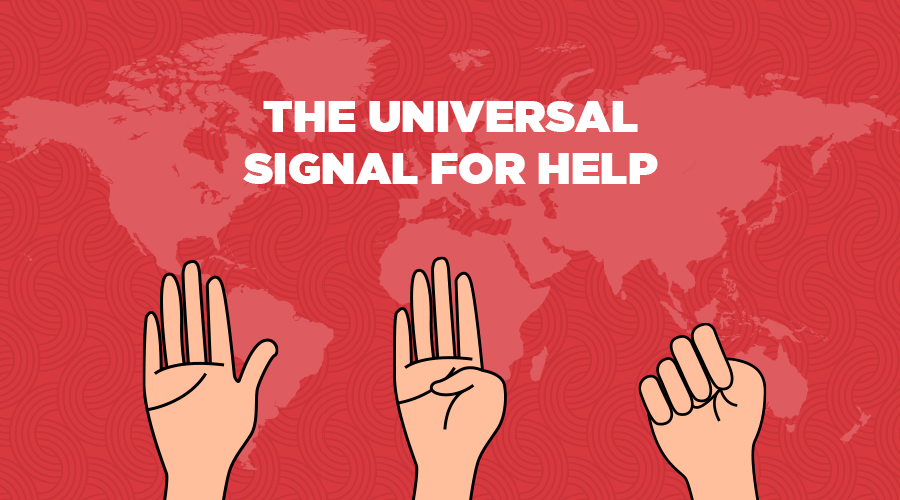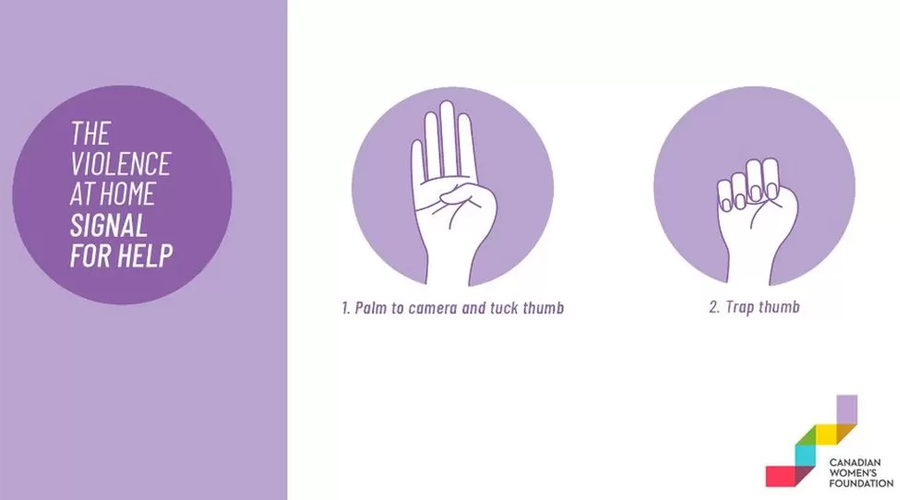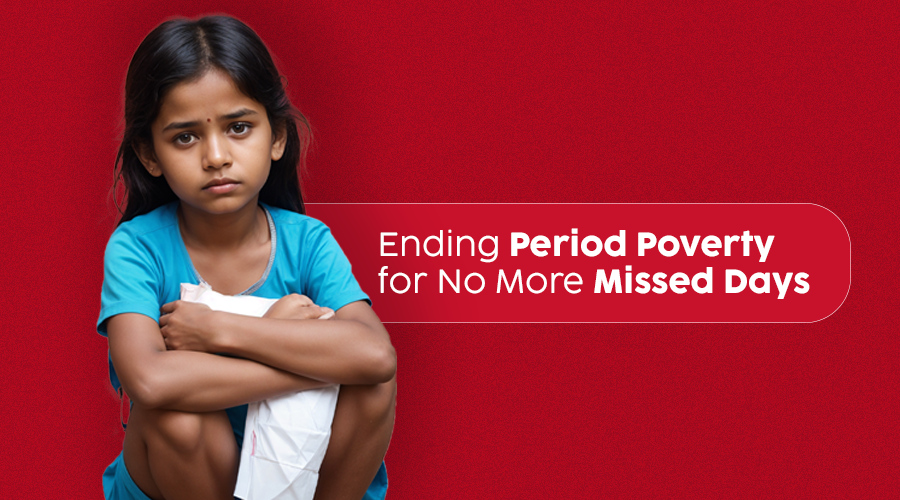The empowerment of women is not just an individual or a community’s concern; it is a global necessity. A nation’s progress, prosperity, and harmony are firmly rooted in the empowerment of its women. The United Nations’ 2030 Agenda for Sustainable Development underlines the critical role of women’s empowerment in achieving sustainable development goals. The agenda emphasises that no nation can thrive by leaving half of its population behind.
However, a nation that respects and upholds the rights and safety of all its citizens, particularly women, is a nation that flourishes in true sense.
In this context, the ‘Signal for Help‘, a discreet hand gesture, has emerged as a beacon of empowerment and safety for women. This silent signal provides a safe and non-verbal way for those in distress to communicate their need for help. The ‘Signal for Help’ is not just a sign; it is a symbol of empowerment and hope for those trapped in dangerous situations. It’s a tool that can potentially save lives and offers a way for victims to regain control in situations where their circumstances have been taken out of their hands.
Signal for Help: The Origin and Spread
The Origin
Signal for Help, created by the Canadian Women’s Foundation, marked a pivotal moment in addressing the escalating crisis of domestic violence during the COVID-19 pandemic. Launched in April 2020, this innovative gesture was meticulously crafted to bridge the gap between vulnerability and assistance, offering a lifeline to those trapped in abusive environments. Its impact swiftly captured attention across platforms like TikTok, where its message of empowerment resonated deeply. As its significance spread, the Signal for Help transcended borders, becoming a beacon of hope worldwide. Its adoption by the international Women’s Funding Network (WFN) attests to its transformative power and underscores the collective determination to combat violence against women.
The Lifesaving Gesture: A Case Study
One of the most gripping instances where the ‘Signal for Help’ played a crucial role was the case of a 16-year-old girl from Kentucky. The girl, who had been kidnapped, used this hand signal while in her kidnapper’s silver Toyota car. Another driver who noticed the distressed victim on the road recognized the signal, alerted the police, leading to her rescue. “A female passenger in the vehicle making hand gestures that are known on the social media platform TikTok to represent violence at home – I need help – domestic violence,” the Laurel County Sheriff’s Office said in a statement. This case underscores the importance and effectiveness of the ‘Signal for Help’ in real-life situations.
When & How to Use the Signal for Help
The Signal for Help serves as a versatile tool in a multitude of situations where communication might be constrained or unsafe. Beyond its initial application in addressing domestic violence, this discreet yet impactful gesture can be employed to summon assistance in various contexts. In public areas where a person is facing unexpected dangers can silently signal for help to passersby. In medical emergencies, individuals who are unable to speak or communicate clearly can utilise the signal to alert those around them to their critical condition. Moreover, it can be a crucial asset in instances of human trafficking, bullying, or harassment, offering victims a means to discreetly seek support without alerting perpetrators. This simple yet powerful symbol goes beyond language barriers, cultural differences, and physical constraints, serving as a unifying plea for aid.
To use the ‘Signal for Help’, you need to:
- Hold your hand up with your palm facing the other person.
- Tuck your thumb into your palm.
- Fold your fingers down over your thumb.
If you see someone using this signal, the Canadian Women’s Foundation recommends that you should not necessarily call the authorities immediately unless the person appears to be in immediate danger. Instead, try to safely check in with the person to find out what they need and want you to do.
How to be Signal for Help Responder
Recognizing the Signal for Help is only the first step. The next crucial part is knowing how to respond effectively and safely. The Canadian Women’s Foundation provides a comprehensive guide on how to be a Signal for Help responder.
Upon seeing someone use the Signal for Help, it’s important not to react immediately during the video call or in the presence of potential abusers. Instead, reach out to them later in a more private and secure manner. This could be through a text message, social media, WhatsApp.
When reaching out, ask general “yes” or “no” questions to reduce the risk and make it easier for them to respond. For example, you could ask:
- “Do you want me to call 100?” (Only do this if the person explicitly asks you to.)
- “Should I search for services to help and call you back?”
If you know the person using the signal, you could send a generic message that requires a yes or no response, such as “I’m here; give me a call whenever you can”. The key to responding is to be kind, caring, and non-judgmental. Recognize that the person may be facing trauma and other issues. Your role is to support them and help them get the help they need.
What if you can’t use Signal for Help?
If someone finds themselves unable to use the Signal for Help due to their circumstances, there are still several crucial avenues for seeking assistance and safety. They can reach out to help centres, police stations, or their loved ones through various means such as email, SMS, or by leaving an SOS message on social media platforms. In case of immediate danger:
- Dialling emergency numbers like 100 or 112 can connect them to prompt assistance. The All-In-One Helpline Number provides a reliable option for reporting distress and seeking help.
- Individuals can physically visit organisations like “Sakhi, The One Stop Crisis Centre” that specialise in aiding those facing domestic violence and abuse.
- Download the “Suraksha Safety App,” which can be a lifeline during critical situations.
Remember, support is available through various channels, ensuring that those in need have options to reach out and find safety.
Her Safety, Her Alerts: The Bottomline
The Signal for Help stands as a silent yet echoing symbol of safety and solidarity. A simple yet ingenious hand gesture, it offers a lifeline to those in distress, bridging the gap between vulnerability and aid. Whether facing domestic violence, medical emergencies, or perilous situations, the Signal for Help serves as a universal language of distress, calling upon allies and bystanders to recognize and take action.
As we continue to raise awareness about this signal, let’s remember that it is not just about recognizing the sign but also about knowing how to respond. Let’s all be part of the solution and help make our communities safer for everyone. Spread awareness and save lives.








